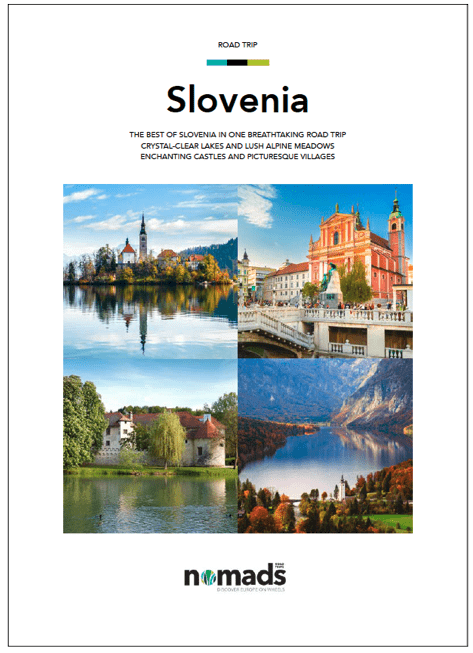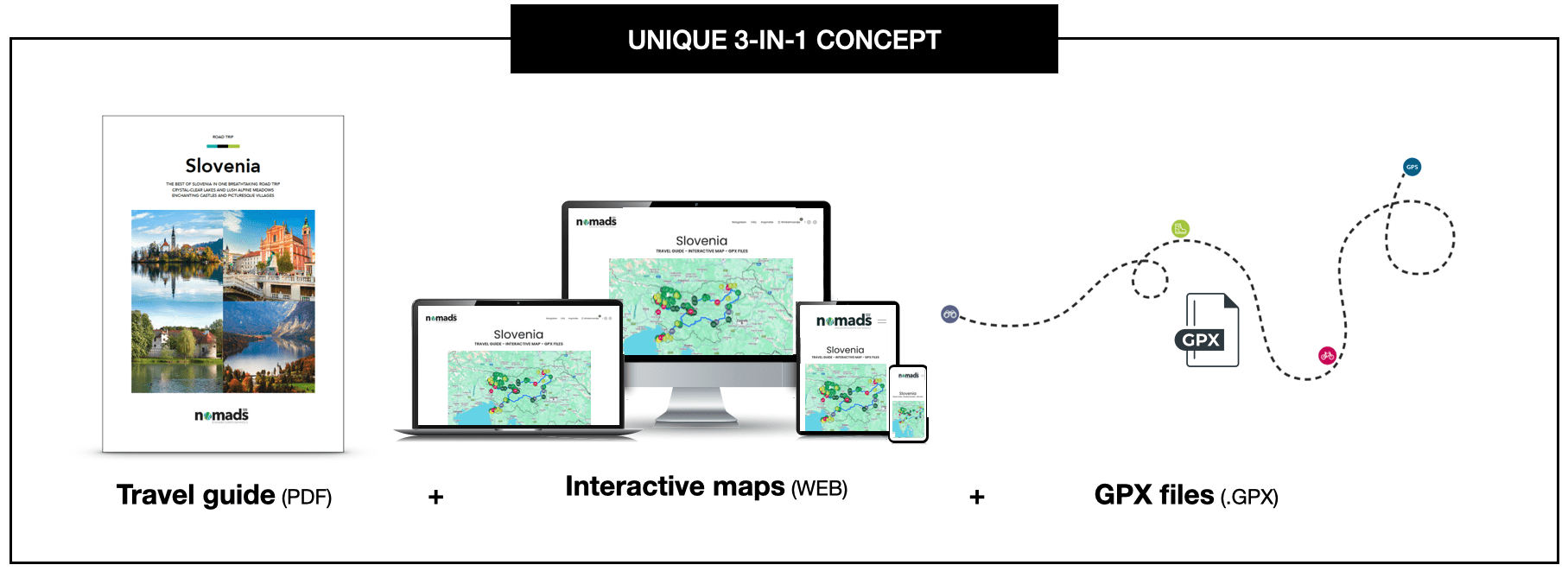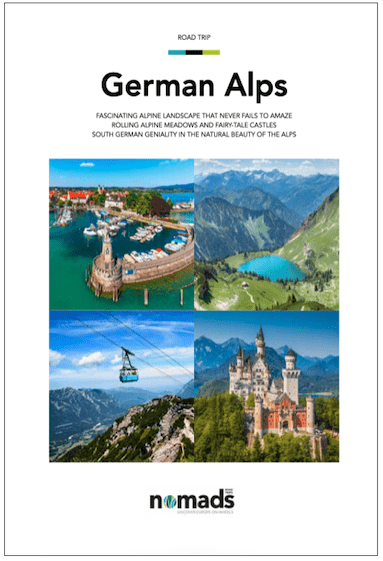
Slovenia
This travel guide describes an 832 km road trip through beautiful Slovenia. The road trip follows a fascinating route past breathtaking natural beauty, historic towns and charming villages, divided into 7 easy-to-follow stages. The route starts in Bohinj and then takes you through the impressive Soca Valley, Ljubljana, Koper, Krka, Maribor and on to the majestic Kamnik Alps. Highlights along the way include Triglav National Park, Great Soča Gorge, Ljubljana's Central Market, the Škocjan Caves, Portorož, Celje and the breathtaking setting of Velika Planina.
- The perfect travel companion if you want to visit Slovenia by camper van, car or motorbike.
- Clear layout in 7 stages with GPS points, sights, tips, walking routes, cycling routes, tourist services and places to stay.
- Available as an online & printable PDF (48 pages) in a beautiful design, illustrated with inspiring texts and high-quality photography.
- Includes an interactive map for PC, tablet or smartphone so you have all the information you need at your fingertips while on the road.
- Available as a GPX file so you can download the entire route to your GPS.
Read the first chapter

Some highlights on this road trip

Goriška Brda region
We cross the Austrian-Slovenian border via Ljubelj instead of via the Karawanken Tunnel. This is mainly to avoid traffic jams, but also because the road via the Ljubelj Pass is very pleasant to drive along, with winding roads and exciting hairpin bends. Once across the border, we enter the Goriška Brda region. This region is best known as a wine-growing area. We can confirm without a doubt that the Slovenians know how to make wine and are every bit as good as their Italian neighbours. The region's landscape is also somewhat reminiscent of Tuscany. You will also notice that Italy is not far away in the Italian-inspired cuisine. Be sure to try žlikrifi, the traditional Slovenian dumpling.
Our first stop is one of Slovenia's most famous places: Lake Bled. This lake is characterised by a small island with a church on it. You can go for beautiful walks or bike rides around the lake. If you prefer to avoid the tourist crowds in Bled, you can drive on to Radovljica, a small and charming village just 10 km from the lake. It is the ideal base from which to explore the surrounding area.

Triglav National Park and Bohinj
The Gorenjska region is one of the most beloved and popular regions in Slovenia. The combination of spectacular mountain landscapes and a rich history is the ideal combination for many. You can explore the diverse nature in Slovenia's only national park: Triglav National Park. To fully experience the nature reserve, you will need at least a week. However, you can make a selection of a few must-sees. What you can definitely do is simply enjoy the beautiful nature in peace and quiet.
Bohinj and Lake Bohinj are largely located in Triglav National Park. Like Lake Bled, Lake Bohinj is an absolute must-see. This lake is the deepest lake in Slovenia and is located in the Bohinj Valley, surrounded by the imposing Julian Alps. Most visitors flock to the lake during the summer months because of the many water sports on offer. However, it is just as beautiful in autumn thanks to the surrounding trees that turn red and orange. On the eastern side of the lake is the Church of St. John the Baptist. Inside, you will find walls completely painted with frescoes depicting, among other things, the story of Cain and Abel. Not far away is the 78-metre-high Savica waterfall. The best way to get there is to drive past Ukanc and park your camper, car or motorbike in the car park next to the restaurant.

Bovec and the Soča Valley
We explore Triglav National Park a little further and drive to Bovec, where one of the most popular activities is rafting on the Soča River. Rafting is available for all levels. In certain places, the river is a little calmer, allowing families or people without rafting experience to venture onto the Soča. More experienced rafters can let off steam on the wild sections. Experiencing the Soča is hugely popular with both locals and tourists. In addition to rafting, you can also go kayaking, canyoning, snorkelling and much more. Not a water lover? Don't worry, there are beautiful walks along the banks of the Soča. For many daredevils, this region is also very popular for parachuting and hang gliding. We follow the Soča to the Tolmin Gorges, the lowest point in the Triglav National Park. A path runs through the gorge, showing you the natural geographical formations. The walk takes about 1.5 hours and admission tickets are available at the ticket office past the restaurant.

Ljubljana
Ljubljana is one of the smallest capitals in Europe. This beautiful student city is a nice change from all the nature we have already explored during this road trip. As we said, Ljubljana is not big, but you can enjoy good food and all the sights are close together in the historic centre around the Ljubljanica River. Must-sees are undoubtedly the Dragon Bridge and Ljubljana Castle, which towers high above the city. The castle can only be reached after a brisk walk or by cable car (for a fee). The 15th-century Ljubljanski Grad was built on the highest point of the city and was inhabited by provincial rulers until the 17th century. Remains of Roman and Celtic forts have also been found at this strategic location. The Dragon Bridge, or Zmaski Most, was built over the Ljubljanica River in 1901. The bridge refers to the symbol of the city: the dragon. Four large stone dragons guard the bridge, two on each side. It was also one of the first bridges in Europe to be built entirely of concrete and steel. Be sure to take a stroll among the red and white houses! The St. Nicholas Cathedral and St. Francis Church also enchanted us.


